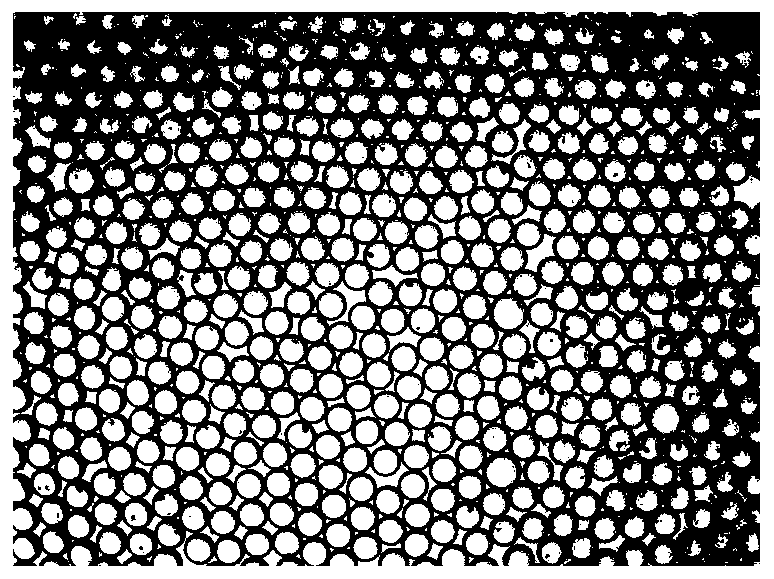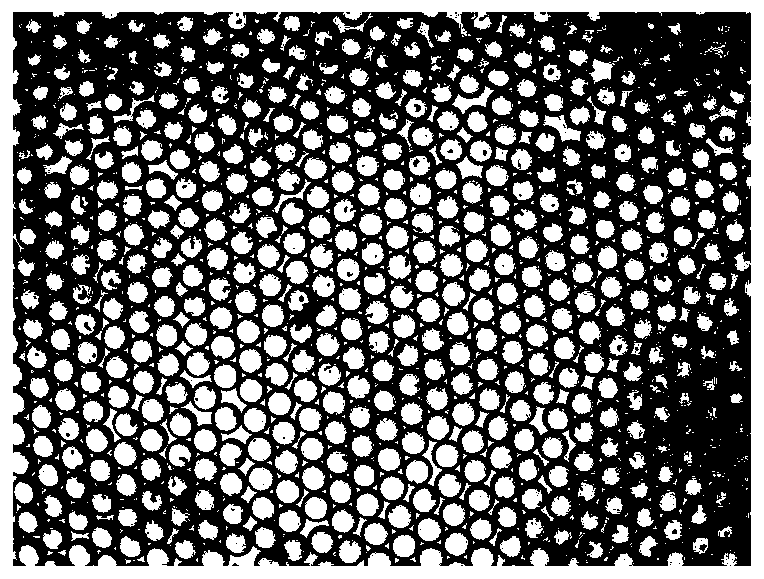Method for detecting long non-coding RNA in urine of prostate cancer patients by using digital PCR
A prostate cancer, digital application technology, applied in the field of tumor molecular biology, can solve the problems of difficulty in detecting prostate cancer, cumbersome operation and high cost, and achieve the effects of easy automatic detection, simple operation and low detection limit
- Summary
- Abstract
- Description
- Claims
- Application Information
AI Technical Summary
Problems solved by technology
Method used
Image
Examples
Embodiment 1
[0065] The collection and pretreatment of embodiment 1 urine sample
[0066] The steps specifically include:
[0067] 1-1) The traditional prostate massage method is used, that is, the examiner performs a digital rectal examination, touches the prostate on the forearm of the rectum, massages the central groove three times symmetrically from the left and right sides, and then massages the central groove three times from the bottom of the prostate to the tip, and then instructs the patient Collect 50ml of initial urine after urination, and immediately cool it in cold water; within 2 hours after donation, transfer the urine (about 100ml) from the collection cup to a 50ml sterile centrifuge tube;
[0068] 1-2) Centrifuge at 4°C, 3000r / min for 5 minutes, discard the supernatant (be careful not to pour out the precipitate), and collect the urine sediment;
[0069] 1-3) Resuspend the precipitate with 1ml of pre-cooled PBS solution, transfer to a 1.5ml centrifuge tube, centrifuge at ...
Embodiment 2
[0071] Example 2 RNA extraction (extracted using invitrogenTRIzol reagent)
[0072] The steps specifically include:
[0073] 2-1) Add Trizol solution to the treated test sample prepared in Example 1, vortex and mix, and let stand for five minutes;
[0074] 2-2) Add 0.2ml chloroform to every 1ml Trizol solution, vortex and mix well and let stand for 2-3 minutes;
[0075] 2-3) Centrifuge at 12000g for 15 minutes at 4°C, and transfer the supernatant aqueous phase to a new 1.5ml centrifuge tube;
[0076] 2-4) Add 10 μg of RNase-free glycogen and 0.5 ml of isopropanol to the supernatant obtained per 1 ml of Trizol solution, vortex and mix well, and let stand for 10 minutes;
[0077] 2-5) Centrifuge at 4°C and 12000g for 10 minutes, discard the supernatant;
[0078] 2-6) Add 1ml of ethanol with a volume fraction of 75% to the precipitate obtained per 1ml of Trizol solution, and gently invert and mix;
[0079] 2-7) Centrifuge at 4°C and 7500g for 5 minutes, discard the supernatan...
Embodiment 3
[0082] Example 3 reverse transcription (using TAKARA reverse transcription kit)
[0083] The steps specifically include:
[0084] 3-1) Genomic DNA removal reaction: prepare the reaction mixture on ice according to the following components;
[0085] Reagent Usage amount 5*gDNA Eraser Buffer 2.0 μL gDNA Eraser 1.0 μL Total RNA (made by embodiment 2) 100ng RNase Free dH2O Make up to 10μL
[0086] Mix well and incubate at 42°C for 2 minutes to remove genomic DNA from total RNA; then place on ice;
[0087] 3-2) For the reverse transcription reaction, configure the reaction mixture on ice according to the following components;
[0088] Reagent Usage amount Step 3-1) reaction solution 10 μL PrimeScript RT Enzyme Mix I 1μL RT Primer Mix 1μL 5*PrimeScript Buffer 2 4μL RNase Free dH2O 4μL total 20 μL
[0089] After the preparation and mixing, carry out the reverse transcription react...
PUM
 Login to View More
Login to View More Abstract
Description
Claims
Application Information
 Login to View More
Login to View More - R&D
- Intellectual Property
- Life Sciences
- Materials
- Tech Scout
- Unparalleled Data Quality
- Higher Quality Content
- 60% Fewer Hallucinations
Browse by: Latest US Patents, China's latest patents, Technical Efficacy Thesaurus, Application Domain, Technology Topic, Popular Technical Reports.
© 2025 PatSnap. All rights reserved.Legal|Privacy policy|Modern Slavery Act Transparency Statement|Sitemap|About US| Contact US: help@patsnap.com



